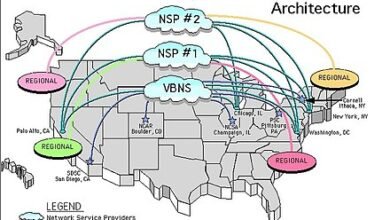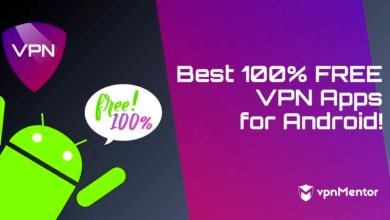
Internet Marketing: What It Is, Types, and How to Start
Definition, Types, and Stages
What Is Internet Marketing?
Internet Marketing Overview (also known as online marketing) is the practice of using online channels to promote a brand, product, or service to a target audience. And can build brand awareness, nurture leads, and turn customers into loyal advocates.
It encompasses various techniques designed to attract, engage, and convert potential customers across online channels.
Those techniques include:
- Content marketing
- Search engine optimization
- Social media marketing
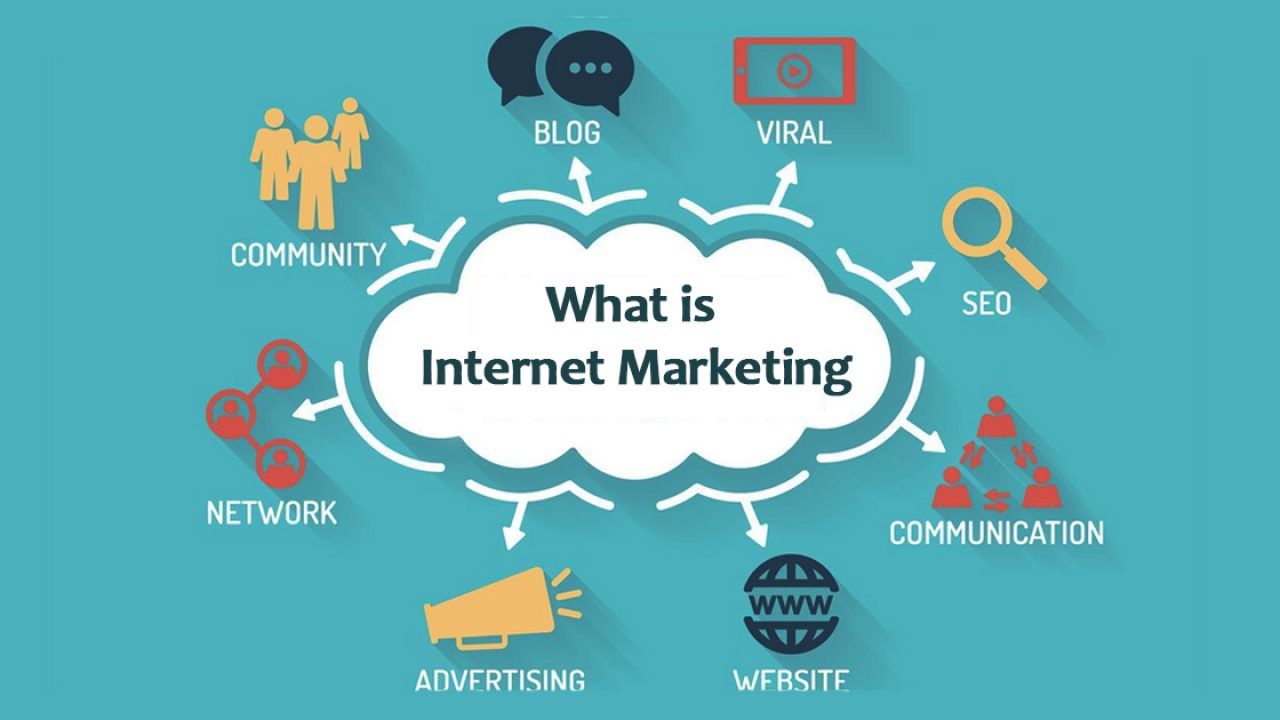
Unlike traditional marketing channels such as TV and direct mail (which have limited reach), internet marketing can help brands forge and maintain profitable relationships by reaching audiences where they spend the most time: online.
Digital marketing, internet marketing, and web marketing are often used interchangeably.
But digital marketing extends to some offline channels (e.g., SMS and electronic billboards). Otherwise, they include most of the same methods.
Ways Internet Marketing Is More Effective Than Traditional Channels
Although both traditional and internet marketing can reach many prospects, internet marketing allows you to make sure your business gets in front of more qualified audiences. Meaning the people who are most likely to make a purchase from you.
Plus, you can point those audiences directly to your website to take the next step with most digital marketing channels.
Here are some other benefits of internet marketing to consider:
It Builds Trust and Credibility
Brands with a strong online presence can more easily build trust and credibility in the eyes of their target audience. Which makes it easier to earn new customers. And encourages brand loyalty.
For example, look at the search engine results page (SERP) when you search the term “Zillow.” The results show a company with helpful content, industry credibility, and a trusted reputation.
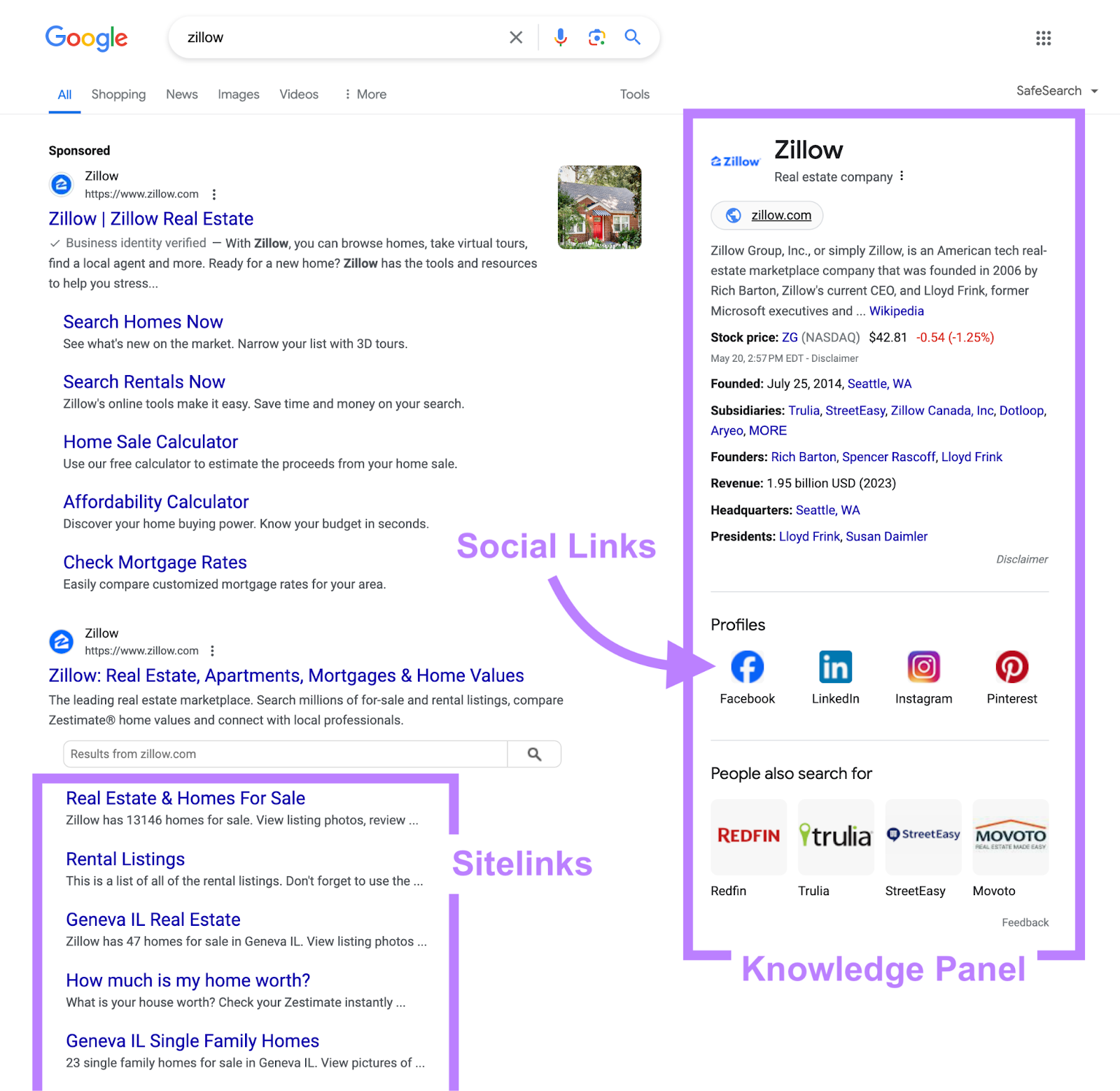
There are many ways to build credibility through internet marketing. Such as:
- Creating helpful content that ranks in the SERPs
- Encouraging customers to leave reviews, which will likely lead to more positive reviews
- Sharing helpful resources and information on social media accounts
- Getting mentioned by influencers or on authoritative websites
When your brand name appears in many places on the internet (and with high-quality content), users are more likely to see you as a trusted industry leader. So, they’ll be more likely to remember you when it comes time to make a purchase.
It Has Instant Global Reach
Over two-thirds of the world’s population is on the internet. And marketing online allows you to reach many of those 5.44 billion users who may be willing to engage with your content.
Your reach is much smaller when using traditional marketing channels like direct mail and billboards.
For example, a $2,500 billboard can only reach people who pass it. That tends to limit its audience to the people of one town or city. And even then, you don’t know who will see it.
But you could spend less than $7 on an Instagram ad that achieves 1,000 impressions (i.e., users see it 1,000 times).And Instagram’s targeting features (more on those below) ensure you reach people actually interested in your product.
It’s Highly-Targeted
Marketing in the internet age allows you to deliver personalized content to specific audiences—something that 71% of consumers expect brands to do. Which helps you build relationships and move your most likely buyers closer to making a purchase.
For example, the clothing brand Uniqlo uses email subscribers’ locations to recommend relevant products based on the weather:
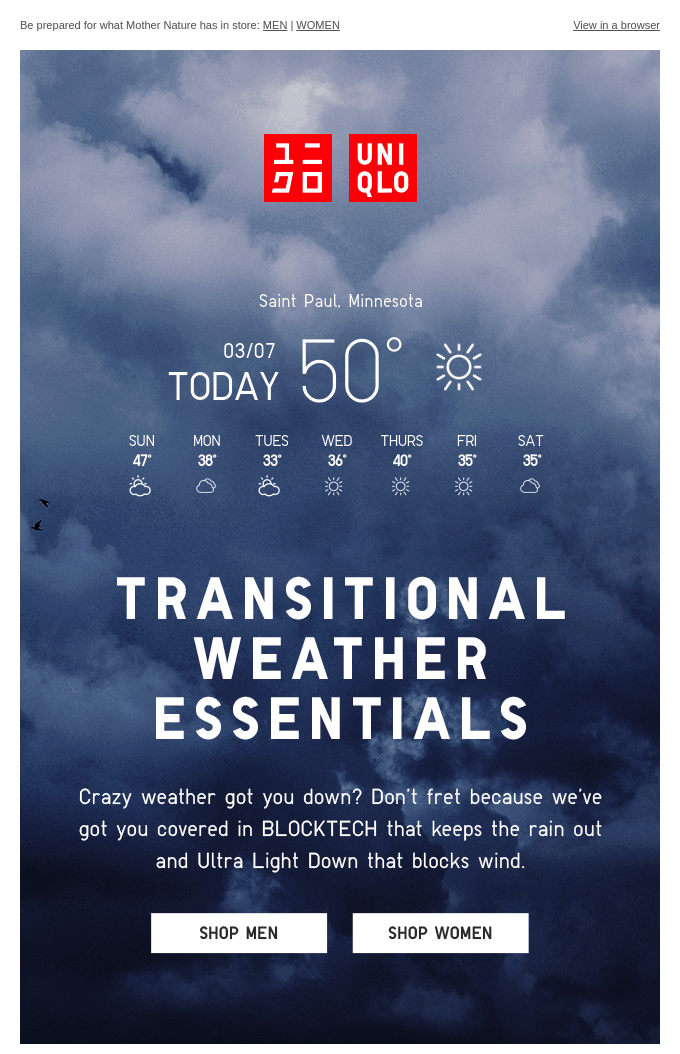
Image Source: Really Good Emails
To create more personalized experiences, you can target audiences based on where they are in the marketing funnel. The stages are:
- Awareness: People who aren’t yet aware of what your business offers
- Consideration: People who are actively considering products or services
- Conversion: Audiences who are ready to make a purchase decision
- Loyalty: Past customers who may be willing to buy again
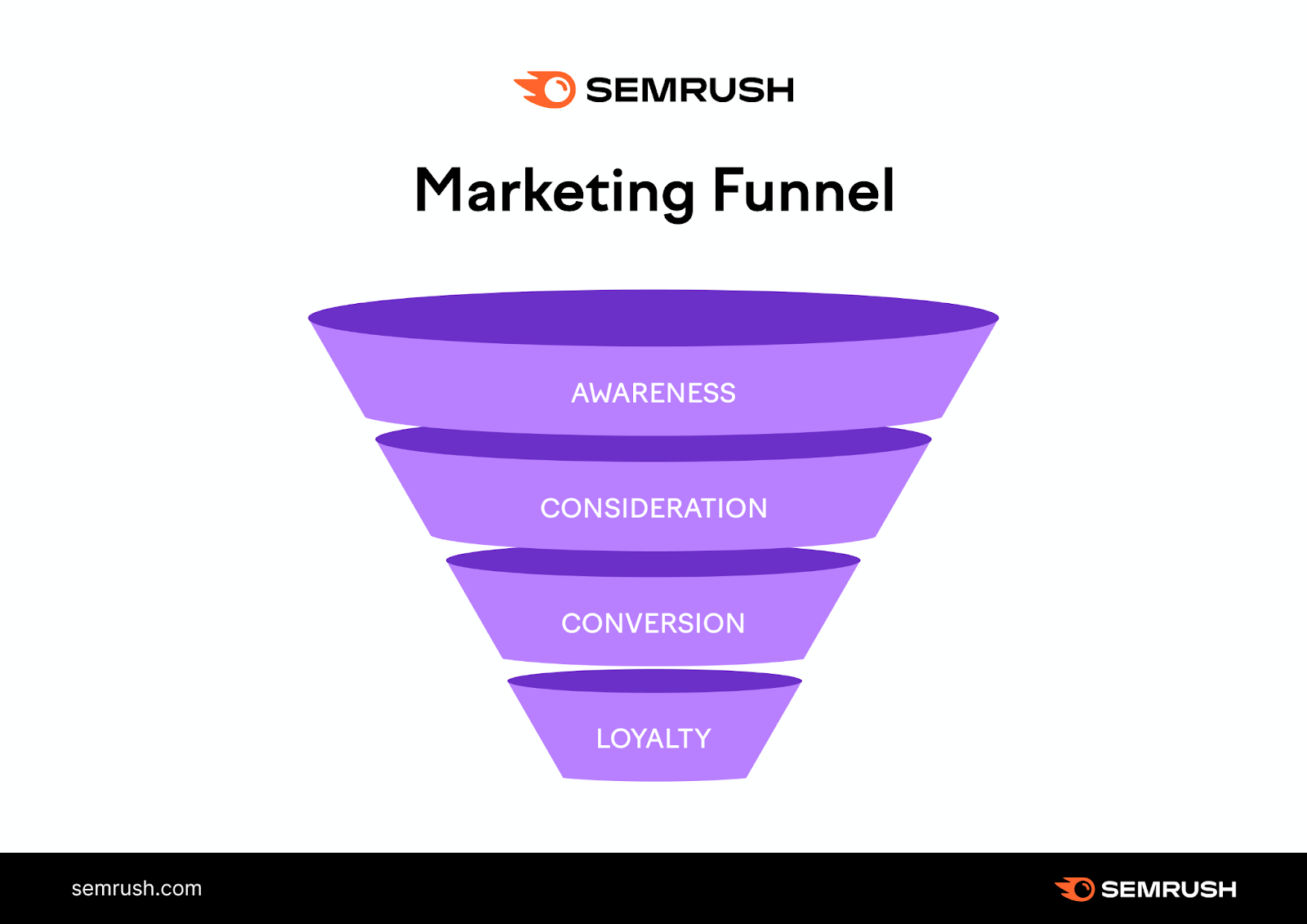
Here are some examples of how to do this kind of targeting:
- Build a “lookalike” audience in Meta Ads to reach new audiences who resemble existing customers
- Create high-quality blog posts or videos that answer common questions about your products or services
- Send marketing emails that include promotions, discounts, or sales to entice your audience
- Start a podcast about your industry that keeps loyal customers engaged with your brand
Exactly how you target and personalize will depend on your marketing goals.
It’s Cost-Effective
Internet marketing can lead to a significant return on investment (ROI). Particularly when compared to traditional marketing.
For example, tech startup Liber Eat grew traffic by 1,000% in a few months using a thoughtful, inexpensive SEO campaign.
If you’re working with a smaller budget, there are also internet marketing channels that allow you to earn traffic organically. Meaning through unpaid tactics like:
- Blog posts
- Video content
- Social media posts
- Guest blog posts
The affordability of marketing on the internet makes it easier to grow visibility without driving your customer acquisition costs too high.
It Can Be Measured in Real Time
There’s plenty of software that can measure your internet marketing campaigns’ performance. Which helps you know what’s working and what’s not, so you can deliver better results.
More specifically, performance tracking can help you:
- Improve upon past strategies or tactics
- Know exactly what content or links bring customers to your website
- Discover what ad messaging is most engaging
- Identify the most profitable channels and direct your focus accordingly
This level of insight just isn’t possible with traditional marketing channels.
7 Types of Internet Marketing That Work (+ Examples)
Here are seven of the most impactful types of internet marketing for your brand.
1. Content Marketing
Content marketing is the process of creating and distributing high-quality, relevant content that can attract your target audience.
For example, Gerber created this helpful infographic about toddler nutrition to promote their Gerber Graduates product.
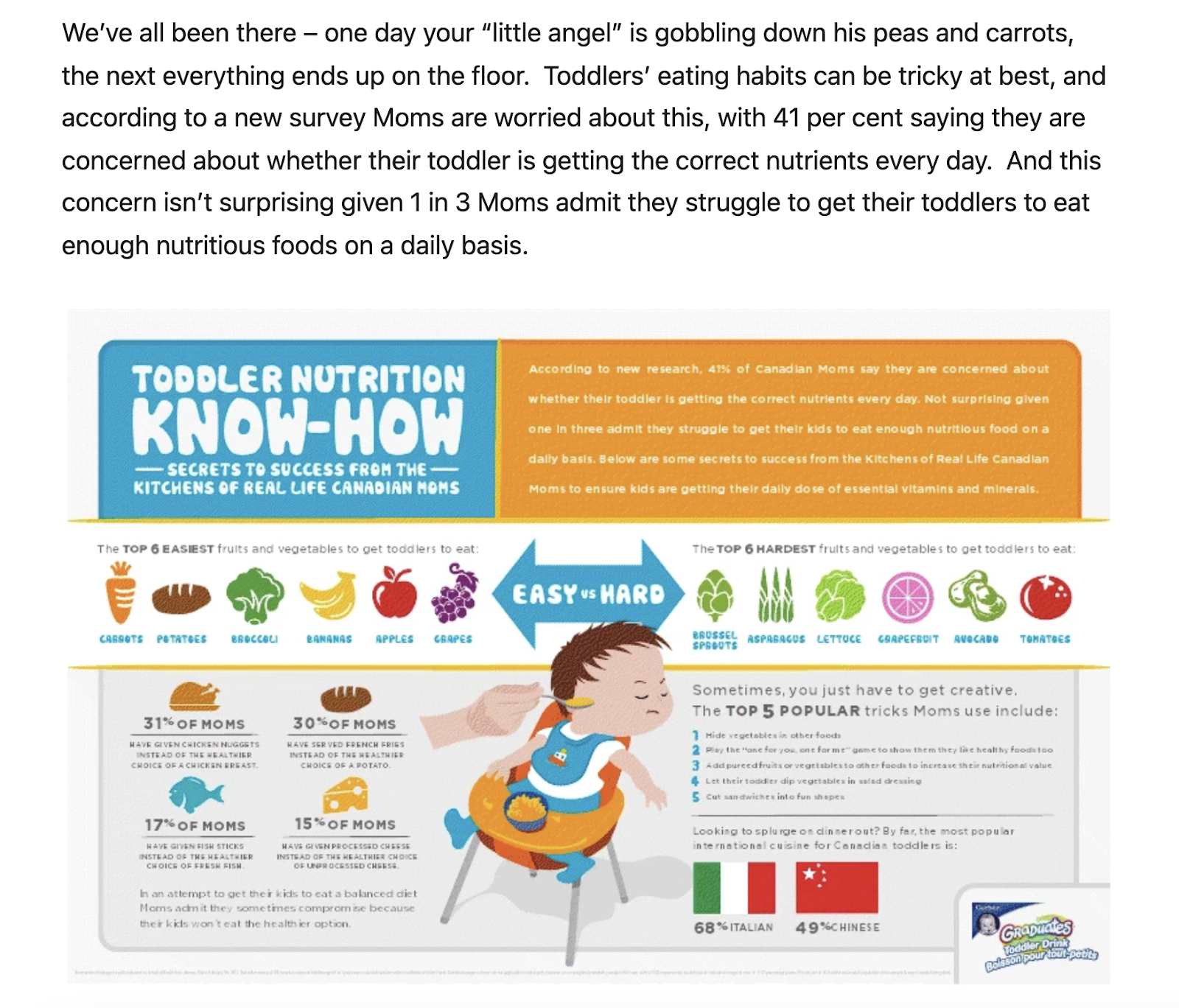
Gerber sent this infographic to multiple influencers. They also published it on their website, posted it on social media, and shared it with their email subscriber list.
They used one piece of content to reach their target audience across all of their marketing channels.
This is why high-quality content is the foundation of online marketing.
And the more content your brand creates, the more opportunities you have to reach your audience. So, review the below content types to get ideas for your own marketing.
Blog Posts
Blog posts are informative articles on your website that provide valuable information to your audience. And answer questions they have about your products, services, or industry.
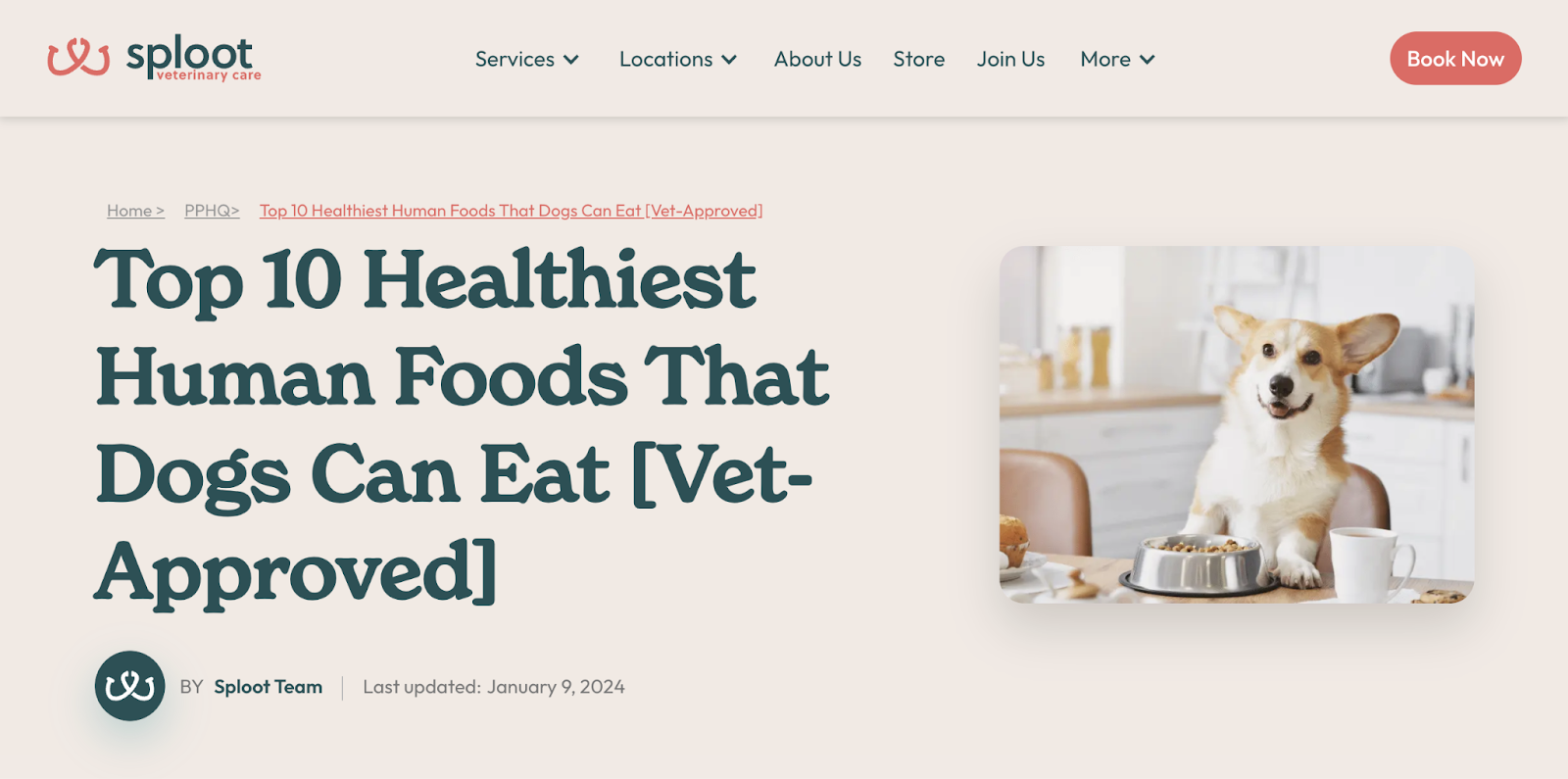
Having lots of high-quality blog posts on your website builds trust and credibility with your target audience.
To create blog posts, you’ll need to:
- Choose topics that are relevant to your industry and target audience
- Do keyword research to find target keywords
- Outline the content and write posts
- Publish the content to your website
One of the biggest benefits of blog posts is that they can rank in search engine results. So, searchers may discover your blog post in the SERPs and click over to your website.
Videos
Video content is ideal for social media platforms like Instagram, YouTube, and TikTok. But you can also link to video content in your blog posts or share videos via email.
For social media, short-form video content is best. Here are some tips for creating it:
- Focus on professional quality
- Make your video the ideal length for the platform you choose
- Get to the point quickly
- Include some type of call to action (CTA)
Infographics
Infographics are visual depictions of data or concepts. And combine informative content with engaging visualizations.
They should include:
- A clear narrative or story
- An attention-getting headline
- High-quality design
Infographics can be added to blog posts, shared on social media, etc.
Podcasts
Podcasts are audio files that can be downloaded or streamed. And they’re great for showcasing your industry expertise and keeping your current customers engaged.
Each of your podcast episodes should be dedicated to a clear topic. And you can even feature guests, which gives your brand an opportunity to develop industry partnerships.
Video recordings of podcasts are also useful. Those videos can be cut down into short-form clips you can post on social media.
Case Studies
For B2B brands, case studies, and are great for showcasing your industry expertise. And detailing how your brand delivered results to customers or clients.
To create a case study, use the below format:
- Choose a data-driven headline that showcases a key result
- Summarize the customer’s background, industry, and goals
- Explain what problem your customer was facing
- Break down the solutions that solved that problem
- Detail the results in quantifiable metrics

